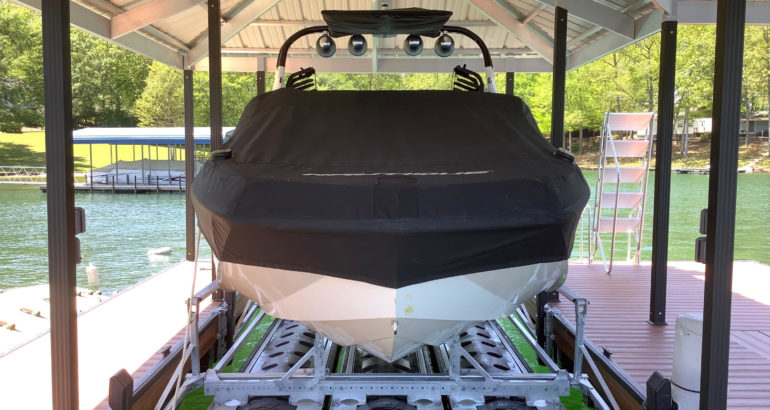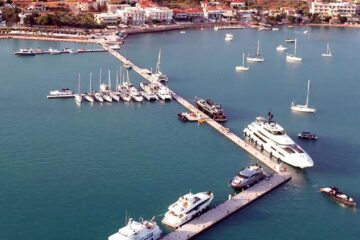Nothing is more discerning than a Boat Lift that begins to creep downward on its own let alone to one side. The following is printed courtesy of HydroHoist LLC, Claremore, OK.
If your boat lift leaks down, the first step is to determine whether your lift actually has a leak, or if it is another issue.
To determine this, fully raise the lift and make certain that the lever is completely turned to the Dry Dock position. Often, a perceived “leak” is just a valve that was not fully closed. Another issue that can falsely signify a leak is air transferring from one tank to another. If your lift is equipped with a single valve, then the tanks will be connected via one or more hoses.
In extremely rough water conditions, air can transfer from one tank to the other, and be lost from the system. This will cause the lift to lean to one side. These false positives aside, sometimes a lift will develop an air leak in the system. This can be due to a faulty valve, loose hose clamp, a damaged hose, or a damaged tank.
The most effective way to find a leak in your system is to simply use soapy water in a spray bottle. Make sure the lift is fully raised and the valves are in the Dry Dock position. Then, spray soapy water on the connections where the hose is attached to the control and where it attaches to each tank. You can also spray the entire area of each tank to check for punctures and damage. To test the control valve, remove the hose from the control and, with the valve closed, spray soapy water into the valve body and switch on the blower motor. Look for the airflow to create bubbles in the soapy water.
Once you have found the source of the leak, it can be repaired. Valves can be replaced. Hose clamps can be tightened or replaced. Tanks can be patched or welded depending on whether they are fiberglass or polyurethane tanks.









